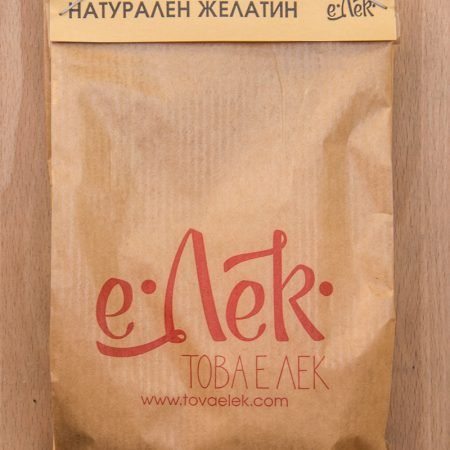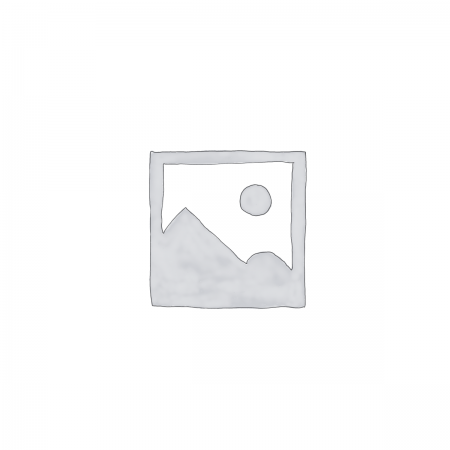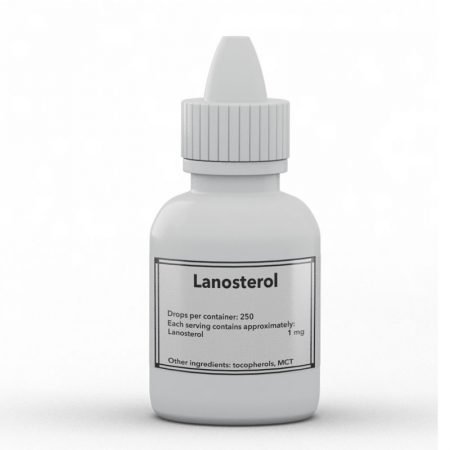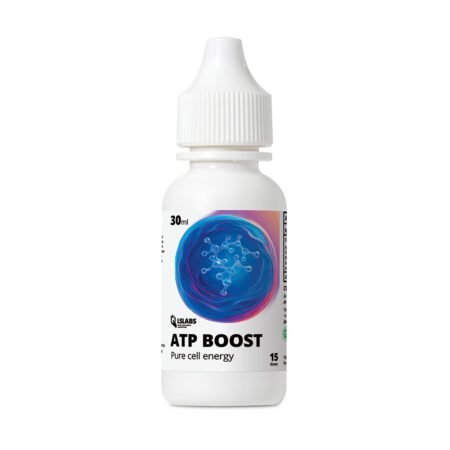Както много читатели знаят, Пийт е писал много за ползите от антибиотиците и за поддържането на стомашно-чревния тракт възможно най-свободен от бактерии. Свръхрастежът на бактерии само в дебелото черво вече е проблем поради производството на ендотоксин, но при хипотиреоидните хора този бактериален свръхрастеж може да се разпространи и в тънките черва. Последното състояние обикновено се нарича SIBO и може да доведе до малабсорбция, възпаление, бактериална транслокация към черния дроб / панкреаса / жлъчния мехур / далака / сърцето / и т.н. Както писах в няколко други теми, хроничното възпаление и транслокацията могат да доведат до множество тежки здравословни проблеми, включително „автоимунни“ състояния, диабет, затлъстяване и дори рак (на черния дроб/панкреаса).
Един от подходите за поддържане на стомашно-чревния тракт възможно най-свободен от бактерии е използването на антибиотици. За повечето хора обаче те не са лесна опция, тъй като изискват рецепта, а някои от тях имат тежки странични ефекти. За щастие съществуват някои диетични методи, които могат да осигурят подобни ползи. Тези методи включват вещества като медицински въглен, фибри, антисеротонинови химикали, аспирин и др. От тях аспиринът има много дълга история на употреба като дезинфектант, включително в стомашно-чревния тракт. Проблемът с обикновения аспирин (и неговия метаболит салицилова киселина) обаче е, че той бързо се метаболизира и абсорбира в стомаха, преди да има възможност да упражни антибактериалното си действие. Той може да има известно въздействие в горната част на тънките черва, но вероятно не остава достатъчно дълго, за да повлияе на дебелото черво. Осъзнавайки както потенциала, така и ограниченията на обикновения аспирин, лекарите още в края на XIX в. измислят модифицирана версия на салициловата киселина. Молекулата е доста проста и представлява просто естер на салициловата киселина с фенол. Общоприетото наименование на този химикал е било Salol – т.е. комбинация от (сал)ицилова киселина и phen(ol).
Phenyl salicylate – Wikipedia
“…It has been used as an antiseptic[5] based on the antibacterial activity upon hydrolysis in the small/large intestine.[citation needed]. It acts as a mild analgesic.[6]”
Тази проста естерификация позволява на салициловата киселина да оцелее повече или по-малко непокътната, докато достигне тънките черва и дебелото черво, където се метаболизира от микробиома и се разгражда на фенол и салицилова киселина. Оказва се, че фенолната част е поне толкова силно антибактериално средство, колкото и салициловата киселина, а може би и още по-силно. Това стимулира разработването на специална синтетична версия на фенола, наречена Димол, която се оказва изключително полезна при ревматоиден артрит (РА). Доказано е, че ползите за РА се дължат именно на въздействието на Димол върху намаляването на бактериалния свръхрастеж и по този начин на нивата на ендотоксините.
https://www.nejm.org/doi/full/10.1056/NEJM192703311961316
https://www.sciencedirect.com/science/article/pii/S0372554517432160
https://europepmc.org/backend/ptpmcrender.fcgi?accid=PMC2522514&blobtype=pdf
Приблизително по същото време, когато Салол става популярен, друго често използвано средство за чревна дезинфекция е камфоровата киселина.
Това е версията на камфора, съдържаща дикарбоксилна киселина, но за разлика от камфора няма мирис, а вкусът му е тръпчив/горчив, подобен на комбинация от лимон и хинин. Това позволява химикалът да се прилага перорално и успешно се използва като чревен дезинфектант, както и за лечение на треска, причинена от различни инфекциозни заболявания като туберкулоза. Затова решихме да пуснем комбинация от тези два химикала като продукт за чревна дезинфекция и го нарекохме CamphoriSal – комбинация от (Campho)ric acid и (Sal)ol. По-долу са дадени някои препратки, свързани с използването на камфоровата киселина и салола като чревни дезинфектанти, включително коментари от Peat относно използването на камфоровата киселина. Именно неговите коментари относно дозата (100-200 mg дневно), която е използвал, повлияха на това какво количество сме формулирали за една доза от нашия продукт.
Ray Peat Email Exchanges – Ray Peat Forum Wiki
“…[Tongue, teeth, gum problems] There are some strong nervous and circulatory interactions between the intestine and the mouth, affecting surfaces and periodontal health, tooth sensitivity, etc. I knew a dentist who stopped doing periodontal surgery when he found that his patients were more easily cured with a laxative. Camphoric acid has been used as an intestinal disinfectant to remedy problems such as coated or sore tongue or bad breath. The tetracyclines have similar effects. Vitamins D and K are important.”
Flowers Of Sulfur Aka Brimstone Logs
“…Local bacteria are usually involved in the white tongue, but typically the problem is mainly in the intestine. I have experimented with the old-fashioned “intestinal disinfectant” camphoric acid (it used to be a common pharmaceutical, 80 to 100 years ago), and when I would swallow about 100 to 200 mg of it in the evening, I would wake up with a perfectly clean tongue, not a bit of the white. Bamboo shoots, raw carrot, and flowers of sulfur are other antiseptics that can reduce the white tongue.”
https://books.google.com/books?id=Q…amphoric acid intestinal disinfectant&f=false
https://books.google.com/books?id=j…amphoric acid intestinal disinfectant&f=false
https://books.google.com/books?id=5…amphoric acid intestinal disinfectant&f=false
“…Camphoric acid is now an official drug duly recognized by the new pharmacopeia. The advisers acted wisely in accepting this drug as one of the additions for official recognition. Its place in therapeutics is firmly established. It has many used in medicine, but it is especially prominent as a remedial agent in combating the night-sweats of consumptives. The claim can safely be made that the use of no other remedy is followed by results so beneficial as follows the administration of camphoric acid in controlling the profuse night sweats of pulmonary tuberculosis. The controlling influence is also exerted in sweating from other causes. Locally, its action is that of a mild antiseptic. In one percent solution it is useful in the treatment of pharyngitis and laryngitis; in the same strength solution it has been used with benefit as a bladder irrigation in the treatment of chronic cystitis. Internally administered, camphoric acid gives good results as an intestinal disinfectant, proving beneficial in the treatment of diarrhea resulting from intestinal fermentation.”
https://books.google.com/books/about/Salol_in_the_Treatment_of_Diarrhea_Dysen.html?id=pxjntgAACAAJ
https://salol.askdefine.com/
“…Phenyl salicylate, or salol, is a chemical substance, introduced in 1886 by Marceli Nencki of Basel. It can be created by heating salicylic acid with phenol. It has been used as an intestinal antiseptic based on the antibacterial activity upon hydrolysis in the small intestine. Once used in sunscreens, phenyl salicylate is now used in the manufacture of some polymers, lacquers, adhesives, waxes and polishes.. Salicylamides are a type of drug.”
http://www.homeoint.org/clarke/s/salol.htm
“…Salol was primarily used as an anti-rheumatic, especially in the treatment of acute cases. It was given as an antipyretic, in 30 to 45 grain doses, in powders or tablets. It is soluble in ether and petroleum spirit; very sparingly, if at all, in water. It does not disturb digestion because it passes through the stomach unaltered, being decomposed in the duodenum, by the ferments of the pancreas, into Salicylic acid and Phenol (it contains 38 per cent. of Phenol). These are excreted by the kidneys, and the condition of intestinal digestion has been estimated by the length of time required, after the ingestion of Salol, for them to appear in the urine. Upon this property also has been based the use of the remedy in acute diarrhœa, dysentery, cholera, and other diseases where intestinal asepsis is indicated, and also in affections of the bladder and urethra as a substitute for ordinary mechanical irrigations and injections. Its internal use in gonorrhœa (in 5-gr. doses three times a day) has met with much success (Helbing).”
https://www.ncbi.nlm.nih.gov/pubmed/29000448
“…Salol is an easily administered, safe drug in the first stage of acute gastroenteritis in children, and in the more chronic forms of entrorcolitis, accompanied by slimy, bad-smelling evacuations. In the acute condition, it is necessary to keep the stomach at rest and administer two or three doses of salol within five or six hours. For the more chronic state of catarrh it is best given in somewhat larger doses belore meals. In frequent serious discharges, and in colitis, the salol does not produce the same good results as in the cases mentioned above, and its effect is uncertain, not being so rapid or so sure as an opiate. In dysenteric disorders it cannot be relied on. It seems, then, that salol acts best in morbid conditions, due to fermentation and decomposition in the stomach and upper bowel, and that it diminishes in power as it passess through the large intestine.”
Източник:
- Колко пресни портокала са ви необходими, за да изчистите черния си дроб от мазнини?Ако имате омазнен черен дроб, включването на пресни портокали в диетата ви може да ви помогне да възстановите здравето на черния си дроб. Това става ясно от малко италианско проучване. Италиански биохимици, свързани с Националния институт по гастроентерология – IRCCS Saverio de Bellis, набират 62 души с метаболитна дисфункция, свързана със стеатозна болест на черния… Více informací: Колко пресни портокала са ви необходими, за да изчистите черния си дроб от мазнини?
- Хроничният стрес понижава допамина и причинява психични заболяванияДоказателствата за ролята на хроничния стрес в почти всички здравословни състояния, за които лекарите имат наименование, продължават да се трупат. За съжаление, дори в това последно проучване учените продължават да настояват, че има някаква мистериозна и неизмерима разлика между хроничния стрес, който „увеличава риска“ и „причинява“ патология. Същите тези учени обаче нямат проблем да заявят… Více informací: Хроничният стрес понижава допамина и причинява психични заболявания
- Естрогенът и кортизолът, а не андрогените, потискат имунитетаВ биологията на възпроизводството има една много известна теория, която все още се смята за доминираща в тази област. А именно, че мъжете трябва да приемат баланса между нивата на андрогените и имунитета. Тя е известна като хипотеза за увреждане на имунната компетентност (ICHH). По-високите нива на андрогените, според теорията, позволяват на мъжкия да н(физически)… Více informací: Естрогенът и кортизолът, а не андрогените, потискат имунитета
- Инхибирането на ароматазата (за намаляване на естрогена) може да доведе до лечение на рак на стомаха.Още едно проучване, което доказва причинно-следствената връзка между естрогена и рак, смятан за хормононезависим. Ракът на стомаха е една от водещите причини за смърт от рак в световен мащаб и особено в азиатските страни. Счита се, че е много труден за лечение и повечето пациенти се диагностицират в стадии, в които операцията не е подходяща.… Více informací: Инхибирането на ароматазата (за намаляване на естрогена) може да доведе до лечение на рак на стомаха.
- Потиснатият имунитет, а не вирусите (HPV), може да е причина за рака на кожатаНаскоро публикувах няколко теми, свързани с имуносупресията и рака. Ето две от тях, които дават добър преглед и свързват имуносупресивните ефекти на ПНМК, естрогена и кортизола със защитните ефекти на витамин А, Е, D, прогестерона и др. https://xenobg.com/pnmk-sa-imunosupresivni-a-gladuvaneto-i-ogranichavaneto-na-proteinite-veroyatno-nanasyat-oshte-po-golyama-vreda/ https://xenobg.com/vitamin-d-mozhe-da-spre-rastezha-na-melanoma/ Въпреки натрупващите се доказателства, че именно потиснатата имунна система позволява на рака да се образува и… Více informací: Потиснатият имунитет, а не вирусите (HPV), може да е причина за рака на кожата
- Витамин К може да лекува левкемияОще едно чудесно проучване, което демонстрира както терапевтичния потенциал на витамините, така и метаболитния/редокс характер на рака. Както споменах в някои от моите подкасти, витамин К2 (MK-4) понастоящем е в процес на клинични изпитвания за лечение/предотвратяване на редица различни видове рак, особено рак на черния дроб и т.нар. миелодиспластични състояния, които обхващат всички видове рак… Více informací: Витамин К може да лекува левкемия
- Витамин D може да спре растежа на меланомаСтрахотно проучване, което потвърждава неотдавнашната ми публикация за това, че избягването на слънчевата светлина е толкова вредно за здравето, колкото пушенето на кутия цигари на ден. В края на краищата, без слънчева светлина няма да има голям синтез на витамин D, а допълнителният прием не е ефективен за много хора поради различни фактори, включително наднормено… Více informací: Витамин D може да спре растежа на меланома
- Повишеният синтез на мастни киселини (FAS) е просто признак за недостиг на кислород / нисък метаболизъмСамо една бърза публикация за проучване, което дава представа за това как повишеното окисление на мастните киселини може „парадоксално“ да доведе и до повишен синтез на мастни киселини, като по този начин води до порочен кръг, който най-често се наблюдава при диабет и рак. В една от последните ми публикации се обсъждаше много по-ново проучване,… Více informací: Повишеният синтез на мастни киселини (FAS) е просто признак за недостиг на кислород / нисък метаболизъм
- ПНМК са имуносупресивни, а гладуването и ограничаването на протеините (вероятно) нанасят още по-голяма вредаКакто споменах в един от първите подкасти с Дани Роди, ролята на ПНМК като имуносупресори всъщност е добре позната в индустрията за трансплантации на органи. В някакъв момент през 80-те години на миналия век дори е имало търговски продукт на основата на ПНМК, продаван на болниците като част от така нареченото решение за „пълно парентерално… Více informací: ПНМК са имуносупресивни, а гладуването и ограничаването на протеините (вероятно) нанасят още по-голяма вреда
- Хората имат подобна на саламандър способност да възстановяват хрущялиЗаглавието говори само за себе си, но авторите на проучването правят злощастното и неудачно заключение, че макар и да можем да възстановим хрущяла, не можем да възстановим крайниците си. Е, многобройните изследвания върху животни, които публикувах в последния материал, не са съгласни с това и сочат както високия метаболизъм, така и прогестерона като мощни регенеративни… Více informací: Хората имат подобна на саламандър способност да възстановяват хрущяли












